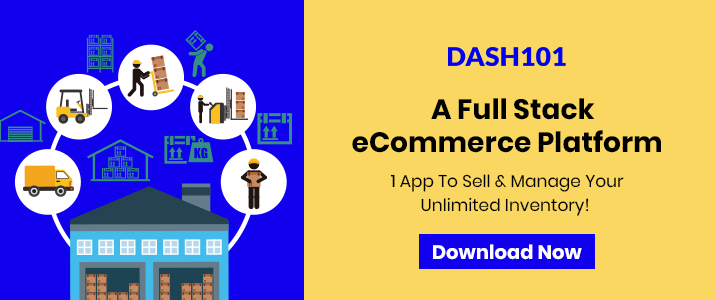The festive season is here! While this a time of enthusiasm and joy for everyone, a few are more excited than others. We’re talking about ecommerce sellers. The festive season brings wonderful business opportunities for sellers. Because customers are always on the lookout for gifts and other products, there is a huge opportunity that sellers can capitalize on. However, there’s one thing they need primarily for this purpose. And that is seasonal inventory!
Seasonal inventory is a special kind of inventory in ecommerce. It helps you cater to the demands of the customers. When the festive season kicks off with Dussehra and goes until Deepavali and Christmas, there is a surge of orders. Customers shop for a variety of their needs. This includes gifts, appliances, home renovation products and much more.
The Surge in the Demand
But, it is worth thinking about why the festive season brings a surge in demand. To begin with, it is the time of celebration. Friends and family meet and greet each other. And therefore, gifting becomes an important aspect of the process. Similarly, if you’re working in a workplace, you’ll get coupons, bonuses or something as a token of celebration.
Therefore, people go on purchasing items for themselves and their dear ones. All of this raises the demand in the market. As a result of this, people go out and make the purchase. Now they usually do it by the two established purchase channels in the market-
Retail
Retail stores have always been the customer’s favourite. There are many reasons for that. When customers go to a retail store they see the product live and can get the sense of it more profoundly. If it is a garment, they can try it and get a look and feel of how it will look on them. This establishes trust and credibility in the eyes of customers. Moreover, there is also less issues and suspicion in quality, because they have inspected the product themself. When it is the festive time, usually there are several lucrative offers for the customers. These lure them to purchase from a brand. But, to accommodate this rush, sellers need seasonal inventory.

eCommerce
Even though retail continues to thrive, today’s customers have moved to ecommerce. While the transition was already taking place over time, it has been accelerated due to the worldwide pandemic. With coronavirus taking over all countries, people are forced to come to terms with the new guidelines. In other words, everybody is now avoiding the crowd and taking the other way. When it translates to festive shopping, the effective result is online shopping.
Ecommerce is already offering lucrative options and offers, most of which are better than retail. And then there are other factors such as saving time going through the hassle of retail, waiting in long queues and more. All of this makes eCommerce a wonderful opportunity for the festive season with the facilitation of seasonal inventory.
But, all of this is only possible when businesses have seasonal inventory with them. It is most likely that you have many questions at this point about seasonal inventory. Don’t worry, we’ll answer them all here! Read on to find out everything you need to know about it!
What is Seasonal Inventory?
To understand seasons inventory, let’s take you through the normal process of sales.
Suppose you run an ecommerce business. You sell handicraft products to your customers. The products that you sell are sourced from a manufacturer directly. And it’s been almost a year that you’ve been in business. Everytime you receive an order, you pick, pack and ship the product from yoru warehouse.
This implies that you already have some inventory stored in your warehouse. And if you are like most businesses, the quantity of this inventory is based on the regular demands. So, let’s say that you receive 50 orders on a daily basis. Therefore, you have a minimum of 60 products stored with you to fulfill your daily requirements.


But, then you are around the festive season and the surge in the order begins. You start receiving 80 orders a day. While you have 60 products to cater to the first 60, you still miss out on the remaining orders.
And if you’ve been in the business long enough you know that you have to pre order stocks from the manufacturers. Remember that the manufacturer doesn’t exclusively cater to your business (in most of the cases). There might be other vendors and wholesalers in the network of the manufacturer who need the similar line of products as you.
Therefore, if you want your manufacturer to suddenly deliver you the extra quantities of products you require, it might not be possible for them. Instead, you have to prepare in advance.
What Could You Have Done Differently to Accommodate the Festive Orders?
Instead of waiting until the last moment when you actually start receiving the orders, it is best to prepare. This is where seasonal inventory comes into the picture. When you know the very fact the seasonal changes cause an effect on the demand of your products, it is a good idea to prepare your business with seasonal inventory. This helps you stay on top of your business. Moreover, it also helps you make good profits.
Therefore, when you know the surge is near, order seasonal inventory for your business in advance. There is however the other side of seasonal inventory as well. For example, there are also certain time periods of the year when customers don’t purchase a lot of products. Maybe because of certain religious beliefs of market fluctuations.
This is where the demand is less. Thus seasonal inventory would mean less quantities than usual of your inventory. In this case, you have to talk to your manufacturer and readjust your usual supplies. Because if your inventory is not moving fast enough, there’s no point stocking more.
What is Considered as Seasonal Inventory?
Now that you know about seasons inventory, it is easy to assume that it applies to all. However, this is not the case at all. Seasonal inventory doesn’t apply to each and every product. It only applies to certain segments of products whose demands fluctuate heavily in the market. For example, appliances, cars and other big gadgets could fall unders seasonal inventory.
Apparels could also fall under seasonal inventory, but they have to be according to the selling region’s weather. So, if you are selling winter garments in a region where it is sunny, it doesn’t make a lot of sense.
Then there are some food items that never fall unders seasonal inventory. Food and beverages are one such class of items. Another category of goods is personal care products. You will see that the requirement of such products is always consistent more or less throughout the year. And that’s intuitive because everybody has these basic needs!
Therefore, the line of business that you choose has a lot to do with the seasonal inventory. If you are selling products that are sensitive to the seasonal fluctuations you will have to adopt smart strategies to deal with it.
Most commonly, there are two kinds of issues observed with seasonal inventory-
Inventory Stock Out
When you are selling a line of seasonal sensitive products, you might come across with this situation. There might be times when you are selling low quantities of your products. This might make you assume that your inventory is not fast selling. Therefore, you do not replenish your stock before the peak season arrives. And as a result, your products turn out of stock.
Low Selling Inventory
Another issue that often comes up with seasonal inventory is that it sells low. Due to a rush season, you might end up ordering more than what sells. As a result, you end up with a lot of unused inventory. For this reason you need to be careful about the choices you make.

How to Take Care of Your Seasonal Inventory?
So, when there are issues with seasonal inventory, what are your options? And is it even worth it to sell seasonal inventory?
As risky as it sounds, seasonal inventory is also promising. But, you need to adopt smart strategies for it. Take a look below-
- Forecast Demand: Make sure you forecast the market demand with complete knowledge of your data. This would result in proper and more accurate predictions.
- Leverage Technology: use data analytics to the rescue. You don’t have to build a team for that. Just leverage the tools in the market and have a good estimate of the insights of your business.
- Kit Your Products: when you are selling seasonal inventory, kitting your products can be a good option, pair your fast selling inventory with a low selling inventory with a lucrative offer.
Conclusion
Remember that seasonal inventory can do more harm to your business if you fail to recognize the opportunities. The best is to streamline your order fulfillment process to manage your seasonal inventory effectively. Use a 3PL logistic service that can help you deliver faster to your customer’s doorstep without any issues. Dash101 can help you make profits on your seasonal inventory with the lowest shipping costs and maximum reach.







Leave a Review